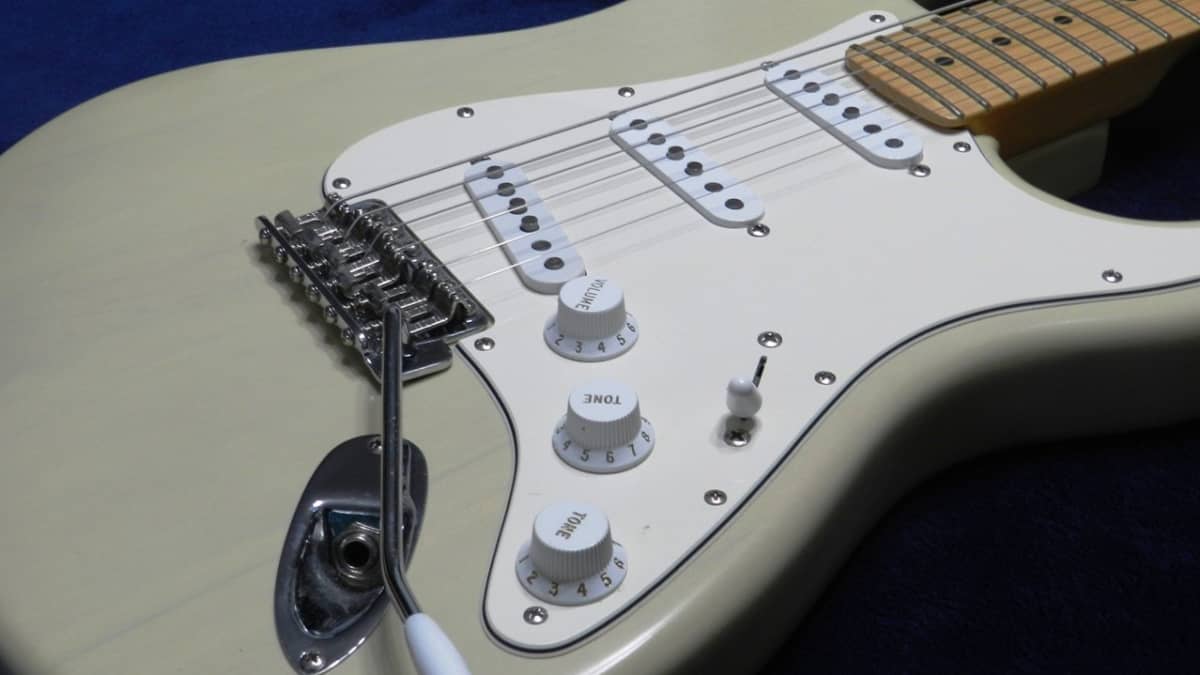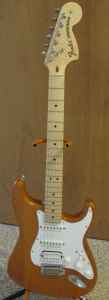

These characteristics actually hold special appeal for many guitarists, as the cracking, yellowing, checking and aging common to this finish type are exactly what many aficionados love about nitro.įender still uses nitrocellulose lacquer finishes on a select group of instruments (Road Worn™ and American Vintage series, various artist models). They get thinner and more brittle as they age because the thinners in them continue to evaporate throughout an instrument’s lifetime.
#2007 fender highway one stratocaster natural crack
Nitro finishes, however, crack and yellow with age, and they can “check” (guitar-speak for fine hairline cracks) with age or sudden exposure to low temperatures. Early on, Fender took its custom colors straight from General Motors under their original DuPont names and part numbers (“Duco” for nitrocellulose lacquer and “Lucite” for acrylic lacquer). Below, take a look at a close-up of finish checking on a Fender Custom Shop 1952 Heavy Relic Telecaster.Īlthough chemically temperamental in the application stage, it was easily applied and resulted in a tough, fast-drying thin finish that blended well with natural wood grain, buffed to a beautiful sheen, spot repaired easily and had flexibility that allowed the wood of a guitar to resonate with little restraint (many guitar buffs believe nitro finishes “sound” better). Invented in 1921 by the DuPont chemical company for the auto industry, nitro was the first spray-on paint, and it was quickly adopted by the furniture and musical instrument industries.Ī Fender Custom Shop 1963 Stratocaster Relic (above) shows the kind of wear typically associated with a nitrocellulose lacquer finish, which this instrument has. Nitrocellulose lacquer (“nitro”) was the finish most often used during Fender’s original 1950s and ’60s golden age, although acrylic lacquers were also used. Suffice it to say that, technically, guitar finishes are no simple matter, but here’s a general primer on modern Fender guitar finishes. Wood is a substance that moves and changes with climate, treatment and age, as do the finish coatings that are applied to it.įender uses a variety of finish types on its instruments, from the original nitrocellulose lacquer finishes used so often in the company’s 1950s-’60s era (and beloved of vintage guitar enthusiasts) to more modern urethane and polyester finishes. And it definitely bears remembering that these finishes are applied to products fashioned from once-living organic plant matter namely, wood. The substances themselves and their various application methods and combinations are enormously complex. You’ll be well on your way to finding the right guitar for you.īoth historically and today, a lot of science is involved in finish coatings for musical instruments. Looking for a beginner guitar? Our interactive gear guide,, matches you with the perfect model by learning about your sound & style. It helps give color and life to its look, feel and sound, and it provides protection from all manner of external influences. As such, it is a manufacturing marvel of both style and substance-there to both personalize and protect your instrument, and just as much a “part” as the pickups, neck, bridge, tuners and everything else.

It gives the instrument a big part of its character and its soul, which, in turn, is a part of what you do and who you are.īy its color, its pattern and its condition-pristine, battered or somewhere in between-the finish is a defining element of your instrument and your musical identity. It’s says you’re state-of-art or old-school classic or cutting edge. It says your style is flamboyant or that it’s laid-back. A guitar’s look is a major part of the statement that guitarists make to the world about themselves.


 0 kommentar(er)
0 kommentar(er)
